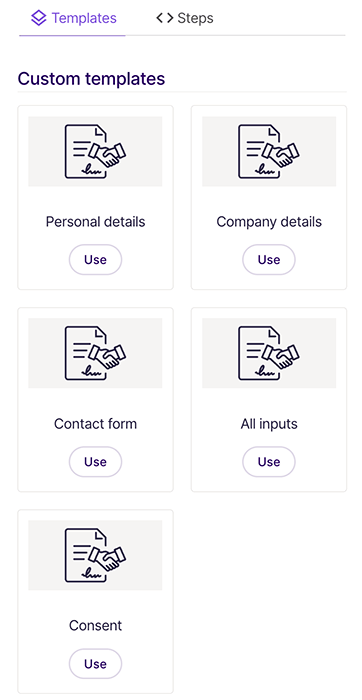# About Steps
Steps are the building blocks of your flows. Each step represents a modular piece of functionality, such as a scaffold to build a web form or a Signicat service to perform an API call to the eID Hub service. To build your desired flow, you can chain as many steps as you want.
When building your flows, you choose steps from two categories:
- Templates are steps pre-designed to meet a specific purpose. You can always start with a template and customise it to fit your needs.
- Steps (basic) are single-purpose building blocks that require additional configuration.
# Types of steps
A flow involves defining a series of steps that perform some action and process information. The steps you add to your flow determine the flavour of these operations. Some steps require end-user input, such as a phone number or authenticating with an Identity Provider, while other steps run in the background without end-user interaction.
From an end-user perspective, there are two kinds of steps:
Background steps are executed without user interaction. For example, storing data or performing a lookup on the datasource of a national register don't require any input from the end-user and are handled on the server side.
Interactive steps expect end-user activity. These steps are rendered in the browser and displayed to end-users during a user journey. A web form is an example of an interactive step.
# Add a step
To add a new step, select the + icon and Add new step in the Flow Builder UI. This will open up the steps menu from which you can select the type of step you want to add to your flow.

Find out how to combine steps to build your flows in the Mint tutorials.

